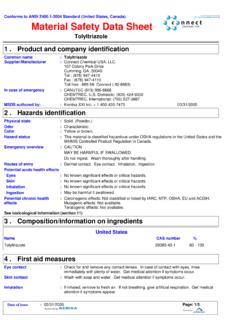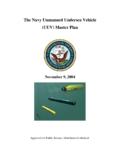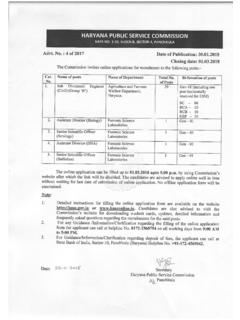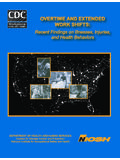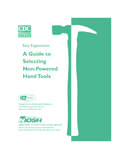Transcription of REVIEW HLH-2004: Diagnostic and Therapeutic …
1 Pediatr Blood CancerREVIEWHLH- 2004 : Diagnostic and Therapeutic guidelines forHemophagocytic LymphohistiocytosisJan-Inge Henter,MD,PhD,1* AnnaCarin Horne,MD,1 Maurizio Arico ,MD,2R. Maarten Egeler,MD,PhD,3 Alexandra H. Filipovich,MD,4 Shinsaku Imashuku,MD,5 Stephan Ladisch,MD,6 Ken McClain,MD,PhD,7 David Webb,MD,8 Jacek Winiarski,MD,PhD,9and Gritta Janka,MD,PhD10for the Histiocyte SocietyINTRODUCTIONH emophagocytic lymphohistiocytosis (HLH) is a diseasewith major Diagnostic and Therapeutic difficulties. HLHcomprises two different conditions that may be difficultto distinguish from one another: a primary [1] and a sec-ondary form [2].
2 The primary autosomal recessive form,familial hemophagocytic lymphohistiocytosis (FHL), hasan estimated incidence of around 1:50,000 live-born children[3]. FHL is a fatal disease with a median survival of less than2 months after diagnosisif untreated, and that typically has itsonset during infancy or early childhood [4]. Despite its name,family history is often negative since the disease is , the onset of FHL and bouts of the disease may betriggered by infections [5].Secondary HLH (sHLH) may develop as a result dueto strong immunological activation of the immunesystem, which may, for example, be caused by a severeinfection.
3 SHLH has been described in immunocompro-mised hosts in association with viral infections, virus-(infection) associated hemophagocytic syndrome (VAHS,or IAHS) [2,6]. However, most patients with sHLH arenotobviously immunosuppressed. sHLH may also deve-lop during malignancies (malignancy-associated hemo-phagocytic syndrome, MAHS); it may either be thepresenting clinical picture and initially mask an underlyingmalignancy, or it may develop during the treatment for aknown malignancy [2].In 1991, the Histiocyte Society presented the first set ofdiagnostic guidelines for HLH [7], and in 1994 the firstprospective international treatment protocol (HLH-94) wasintroduced [8].
4 The cumulative experiences from HLH-94and other studies have led to the development of anew treatment protocol presented here, HLH- 2004 , whichincludes updated Diagnostic and Therapeutic guidelines fromthe Histiocyte OF HLHC linical PresentationThe most typical findings of HLH are fever, hepatosple-nomegaly and cytopenias. Other common findings includehypertriglyceridemia, coagulopathy with hypofibrinogen-emia, liver dysfunction, elevated levels of ferritin and serumIn HLH-94, the first prospective international treatment study forhemophagocytic lymphohistiocytosis (HLH), diagnosis was based onfive criteria (fever, splenomegaly, bicytopenia, hypertriglyceridemiaand/or hypofibrinogenemia, and hemophagocytosis).
5 In HLH-2004three additional criteria are introduced; low/absent NK-cell-activity,hyperferritinemia, and high-soluble interleukin-2-receptor five of these eight criteria must be fulfilled, unless familyhistory or molecular diagnosis is consistent with HLH. HLH-2004chemo-immunotherapy includes etoposide, dexamethasone, cyclos-porine A upfront and, in selected patients, intrathecal therapy withmethotrexate and corticosteroids. Subsequent hematopoieticstem cell transplantation (HSCT) is recommended for patients withfamilial disease or molecular diagnosis, and patients with severeand persistent, or reactivated, disease.
6 In order to hopefullyfurther improve diagnosis, therapy and biological understanding,participation in HLH studies is encouraged. Pediatr Blood Cancer 2006 Wiley-Liss, words:diagnosis; hemophagocytic lymphohistiocytosis ; survival; treatment 2006 Wiley-Liss, 1 Childhood Cancer Research Unit, Department of Woman and ChildHealth, Karolinska University Hospital, Karolinska Institutet,Stockholm, Sweden;2 Pediatric Hematology/Oncology, Ospetale deiBambini, Palermo, Italy;3 Department of Pediatrics IHOBA, LeidenUniversity Medical Center, Leiden, The Netherlands;4 Children sHospital Medical Center, Cincinnati Ohio;5 Department of Pediatrics,Takasago-Seibu Hospital, Japan.
7 6 Children s Research Institute,Washington, District of Columbia;7 Pediatric Hematology/Oncology,Texas Children s Hospital, Houston, Texas;8 Great Ormond StreetHospital, London, UK;9 Department of Pediatrics, KarolinskaUniversity Hospital Huddinge, Karolinska Institutet, Stockholm,Sweden;10 Department of Hematology Oncology, Children sUniversity Hospital, Hamburg, GermanyGrant sponsor: Children s Cancer Foundation of Sweden; Grantsponsor: Cancer and Allergy Foundation of Sweden; Grant sponsor:Swedish Research Council; Grant sponsor: Tobias Foundation; Grantsponsor: Ma rta and Gunnar V Philipson Foundation; Grant sponsor:Histiocytosis Association of America.
8 *Correspondence to: Jan-Inge Henter, Childhood Cancer ResearchUnit, Karolinska Hospital Q6:05, SE-171 76 Stockholm, : 19 February 2006; Accepted 21 July 2006transaminases, and neurological symptoms that may beassociated with a spinal fluid hyperproteinemia and amoderate pleocytosis [1,4,9,10]. Other, less common, initialclinical findings include lymphadenopathy, skin rash,jaundice, and edema. Spontaneous partial remissions areobserved [11]. The onset of the primary (genetic) form istypically during early infancy but presentation in adolescentsand adults have also been reported [12].Histopathological findings include a widespread accumu-lation of lymphocytes and mature macrophages, sometimeswith hemophagocytosis, affecting especially the spleen,lymph nodes (if enlarged), the bone marrow, the liver, and thecerebral spinal fluid (CSF) [13].
9 In the liver, a histologicalpicture similar to chronic persistent hepatitis is commonlyfound [7,13]. Other frequent abnormal laboratory findings inHLH are low natural killer (NK) cell activity [14 18], and ahypercytokinemia, in particular elevated soluble interleukin-2 receptor (sIL-2r) levels (sCD25) [18,19] in serum and in theCSF [19,20].Importantly, it is still often difficult to distinguish betweenthe familial and secondary forms of HLH despite advancesregarding molecular diagnosis. Infection-associated forms ofHLH may subside spontaneously, but may also be associatedwith increased mortality [2]. Furthermore, proving an acuteinfection at onset of symptoms is not of major Diagnostic ortherapeutic assistance, since not only sHLH but also FHLoften feature a triggering infectious agent [5].
10 Differential DiagnosesMany conditions can lead to the clinical picture of HLH,including malignancies (leukemia, lymphoma, other solidtumors), infections (viral, bacterial or parasitic), and rheuma-toid disorders. In addition, there are diseases which develop atrueHLH episodeduring their clinicalcourse, such as X-linkedlymphoproliferative syndrome (XLP), and Che diak Higashiand Griscelli (type 2) syndromes [2,7,21 24]. Some differ-ential diagnoses are Langerhans cell histiocytosis (that may becomplicated by HLH), lysinuric protein intolerance [25],severe combined immunodeficiency [26], DiGeorge syn-drome, and Omenn s syndrome [27].

